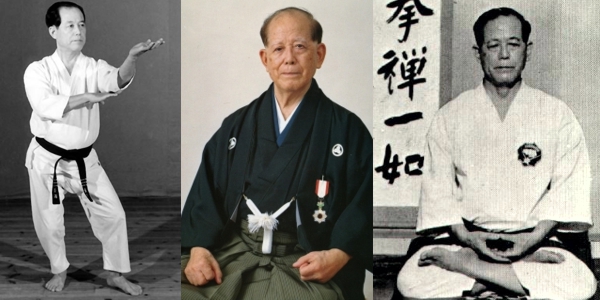Karate master Shoshin Nagamine was born on July 15, 1907 and passed away on November 2, 1997. He was born in Tomari, Naha, Okinawa and was small for his age and always sickly. In 1926, during his second year in high school, he contracted a gastroenteritis and had to impose upon himself a very strict diet. During this time he also began the study of karate with his neighbor, Chojin Kuba. He soon found his health improving and he attributed this miracle to the strong physical exercise of karate and to mental acuity form hard work at school. He became so strong that he was able to lead the school’s karate club and soon was nicknamed Chippaii Matsu, which means tenacious pine tree.
In 1928, after graduating from high school, Shoshin Nagamine moved to Shuri to begin studying martial arts full time under Taro Shimabuku and Ankichi Arakaki. However his study was shor lived as he was drafted into the 47th Infantry Division of the Japanese army and fought in China. He received an honorable discharge in 1931 and needed to work. As a skilled martial artist he became a police officer and while serving in the police force he received training from Chotoku Kyan and Motobu Choki. He earned the title of Renshi in 1940 and by 1951 he was the Superintendent of Police in Motobu and was able to train his officers in karate.
In 1952 Shoshin Nagamine retired from police work and went to Naha City to open his own martial arts school. He called his school Matsubayashi-Ryu Kodokan Karate and Ancient Martial Arts Studies where he taught his own martial arts style, Matsubayashi-ryu, named to honor Sokon Matsumura and Kosaku Matsumora.
Shoshin Nagamine passed away in 1997 and his style was then taught by Kensei Taba. When Kensei Taba retired to teach his own style of karate, Shoshin Nagamine’s son, Takayoshi Nagamine took over as the head of the Matsubayashi-Ryu system until his death in 2012.
Shoshin Nagamine was also the author of two martial arts books, The Essence of Okinawan Karate-Do and Tales of Okinawa’s Great Masters. Both book were originally written in Japanese. The Essence of Okinawan Karate-Do was translated into English in 1976 by Shoshin Nagamine’s student Katsuhiko Shinzato. It wasn’t until the year 2000 that Patrick McCarthy translated Tales of Okinawa’s Great Masters (Bubishi) into English.


